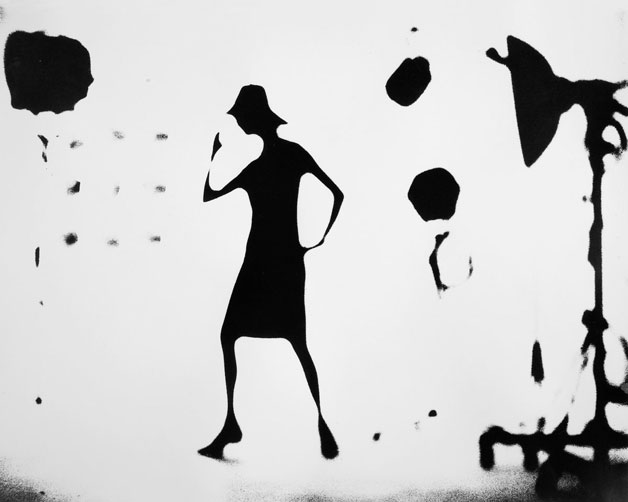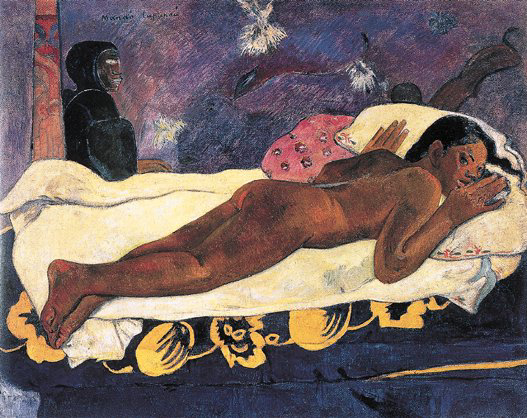&auth=5d6a0317305ab0e52b0fcbe7c068a6ea2f02bf55) We've never heard of it, to Seurat, Cross, Luce, van de Velde, van Rysselberghe or Angrand talked about points, we have never seen them busy scoring. Read the words, which Seurat dictated to his biographer Jules Christophe:
We've never heard of it, to Seurat, Cross, Luce, van de Velde, van Rysselberghe or Angrand talked about points, we have never seen them busy scoring. Read the words, which Seurat dictated to his biographer Jules Christophe:
"Art is Harmony, Harmony is an analogy of Opposites, by analogy of the Similarities, immediately, shade, lines; ton ie. light and shadow; shade, i.e.. red and the complementary green, orange and the complementary blue, yellow and the complementary purple… The medium of expression is optical mixing of tones, shades and their interactions (shadows) according to strictly established laws”.
Is it in these rules of art, which are the rules of separation, it is talking about points? Are there any traces of frivolous scoring games in them??
You can also use splitting without scoring.
Any sketch of Seurat taken from nature, on the bottom of the cigar box, painted with a few brush strokes, it is not scored, but separated, because despite the hasty work, the color is pure, individual ingredients balanced and contrast adhered to. And only these features, not pedantic dotting, they constitute separation.
The role of scoring is much more modest: it simply gives a more vibrating surface to the image, but it provides neither luminosity, nor the intensity of the color, nor harmony. Complementary colors, which favor and strengthen each other, if they are opposed, they become hostile to each other and destroy each other, even if they are optically mixed. The juxtaposition of red and green surfaces accentuates both of them, however, the red dots mixed with the green ones create a gray and colorless whole.
Separation does not require touching the brush in the form of a dot. It may use such a spot in images of small dimensions, but in large-format canvases he rejects it completely. The size of the separated spot must be proportional to the size of the work, otherwise it may become discolored. Stain separated, variable, alive, "light”, so it is not a point, equal, dead, „materia”.
5. You don't have to judge, that painter, who divides, he indulges in mindlessly seizing the perforation of the canvas, small flecks of different colors, top to bottom and right to left. Starting from the contrast of two colors, without dealing with the plane, which needs to be covered, he opposes, it grades and balances the proportions of various ingredients on both sides of the boundary line, until it encounters a different contrast, which becomes the cause of a new gradation. And from contrast to contrast, the canvas is covered.
The painter is playing on his color keyboard, like the composer, he uses various instruments for the orchestra- symphony staging: changes rhythms and measures as he sees fit, immobilizes or ignites some element, it modulates some gradation endlessly. Overwhelmed by the joy of organizing the game and fighting seven prismatic colors, it is reminiscent of a musician multiplying the seven notes of the scale to compose a melody. Contrary, how boring the work of the punch line is… And isn't it a natural phenomenon, that many painters, who at one point, by fashion or by conviction, started scoring, quit this sad job, despite the initial enthusiasm? […]
7. The result, which neo-impressionists strive for, which ensures their separation - this is maximum light, color and harmony. So it seems, that their technique perfectly suits the decorative compositions, and to which some of them sometimes applied it. But away from official orders, having no walls to decorate, they are waiting for the times, when they are allowed to carry out great undertakings, they dream about.
From a distance, which is imposed by the normal size of works of this type, properly applied texture will be imperceptible and the separated components will fuse into luminous ones, brightly colored surfaces. The separated spots will also become invisible, like the strokes of a Delacroix brush in its decorations in the Apollo Gallery or in the Senate Library. […]
Even small canvases of neo-impressionists can be considered decorative painting. They are not studies, nor easel paintings, but "exemplary attempts at art with an outstanding decorative sense, which devotes an anecdote to the arabesque, enumeration for synthesis, to, every moment, for durable and suitable for nature, finally tired of her artificial life, authentic existence” wrote Mr.. Felix Feneon. Are these canvases, which restore light to the walls of our modern apartments, that enclose pure colors in rhythmic lines, which have something of the charm of eastern carpets, mosaics and fabrics, they are not a decorative art?










